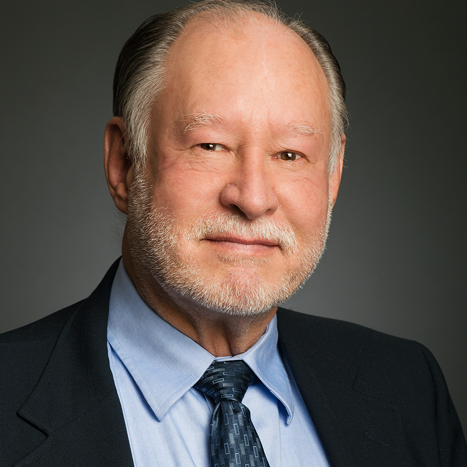Perspective: COVID-19 Shocks the US Health Sector: A Review of Early Economic Impacts
December 17, 2020
George Miller
Corwin (Corey) Rhyan
Ani Turner
Katherine Hempstead
This blog was originally published in Health Affairs Blog and is reprinted with permission.
On December 16, the Centers for Medicare and Medicaid Services (CMS) released its annual update to the National Health Expenditure Accounts (NHEA), the federal government’s official reckoning of US health spending. The update, which covers health expenditures through 2019, indicates that NHE grew by 4.6 percent in 2019, continuing a relatively stable pattern of average 4.5 percent annual growth since 2016. This tranquility was upended by the COVID-19 pandemic beginning in March 2020, resulting in massive short-term health sector spending and employment disruptions that we have documented in our Health Sector Economic Indicators.1
In this post, we examine early evidence regarding health care spending, utilization, employment, and prices for 2020 and look at how COVID-19 might impact these indicators going forward. These insights are informed by CMS’ just-published NHEA data and commentary; our own analysis of the first ten months of 2020, based on the US Bureau of Economic Analysis (BEA) National Income and Product Accounts; and, expectations for the health sector derived from analyzing these and other published sources. While we won’t have a full picture of key 2020 indicators at least until CMS publishes its projections of NHE next spring, what follows is a roundup of what we believe are some of the most striking stories emerging from the 2020 data.
Consistent Overall Health Spending Growth Is Disrupted
Since 2014, the growth of national health expenditures has been remarkably consistent, with annual growth ranging between 4.3 percent and 5.6 percent. Based on our analysis of BEA data, this trend continued for the first two months of 2020, with national health spending just above this range at a year-over-year rate of 5.9 percent. Yet, starting in March, health spending began to decline rapidly as many types of services were curtailed to avoid infection risks, to free up resources to address the pandemic, and because individuals chose not to seek care and risk exposure. April was the nadir, when year-over-year health spending was down 20.1 percent. This was followed by a gradual recovery, so that spending for the first ten months of 2020 was 2.3 percent lower than in the first ten months of 2019. However, the trend for individual spending components sometimes differed significantly from this overall pattern, as seen in exhibit 1, which shows cumulative growth since February.
Exhibit 1: Cumulative Spending Growth since February 2020 for Major Categories
 Note: Percent differences between February and October are shown in the data labels.
Note: Percent differences between February and October are shown in the data labels.
Source: Authors’ analysis of BEA monthly health spending data (methods described here).
These data suggest that 2020 will likely be the first year ever to show an annual decline in overall health spending since CMS began tracking spending in 1960. We expect suppressed spending to continue at least into 2021, until a significant portion of the US population is vaccinated. After that, normal patterns could reassert themselves in most categories, with the US returning to moderate, consistent growth in health spending.
But there are pandemic-related factors that could shape the new normal. For example, one potential source of upward spending pressure in the medium term may arise from pent up demand and higher rates of serious disease resulting from missed screenings and preventive care. On the other hand, future growth rates may be dampened if temporary declines in utilization morph into more permanent changes in patient behavior.
Hospital Spending Growth Reverses While Hospital Prices Accelerate
Hospital spending growth in recent years has tracked fairly closely to overall trends in health spending. Between 2016 and 2019, for example, hospital spending growth averaged 4.8 percent per year, just above the overall NHE growth of 4.6 percent. Yet, these rates diverged in 2019, with hospital spending accelerating to 6.2 percent year over year, driven by greater use and intensity and increased prices. Commercial prices, in particular, have drifted further away from Medicare in recent years.
Hospital spending fell by 35.8 percent in March and April 2020 (exhibit 1), largely due to the elimination of noncritical services such as elective surgeries. Since these are among hospitals’ most profitable services, the financial impact has been significant. Yet, reduced admissions have also been observed for acute medical conditions, including heart attacks and strokes, likely due to changes in patient behavior. This is unlikely to be explained by congestion, since substantial reductions were seen in non-COVID-19 admissions even in hospitals with few COVID-19 patients. Hospital spending began to rebound in May as discretionary care began to resume, although admissions remain roughly five percent below normal levels as of early November, and emergency department volume is even further below baseline. Going forward, a new and lower baseline for hospitalizations could result, given emerging evidence that patient behavior has changed, and that alternatives to admissions (such as home-based care with remote monitoring) may be acceptable for some patients.
While hospital price growth has exceeded overall health sector price growth since 2016, the gap has widened somewhat since the onset of the pandemic. Average year-over-year hospital price growth over the past six months has been 3.4 percent; if this trend holds, the annual price growth for 2020 would be 3.1 percent, compared to 2.0 percent in 2019. In the recent past, consolidation has been a major driver of hospital price growth, and financial distress resulting from COVID-19 may increase the pace of mergers. Hospitals may also feel increased pressure to raise prices to compensate for reduced volume. However, there are significant countervailing forces. Greater price transparency over the past decade has led to calls for a public option at the state and federal level, federal action requiring more price disclosure, attempts at federal legislation to combat surprise billing, and a newly empowered employer movement.
Nursing Home Care Declines and Is Substituted with Home Health Care
From 2013 to 2019, nursing home spending was among the slowest-growing components of overall US health expenditures, increasing by 2.2 percent annually. Accordingly, employment in nursing homes was flat or slightly decreasing over this period. Attributable to broader shifts in practice patterns, transitions away from intensive care near the end of life, and patient preference for home health care over traditional nursing home settings, the slow decline of nursing home spending relative to total NHE was expected to continue into 2020.
Yet, the pandemic has been an unmitigated disaster for the sector, and the decline in nursing home spending and employment has been dramatically accelerated. While the 2020 spending decline was less abrupt than with other categories, it has not benefited from a subsequent recovery. As of October, spending remains down nearly 10 percent from February, the second largest decline among major spending categories (exhibit 1), while nursing homes have lost nearly 130,000 jobs. Three factors have contributed to these reductions. First is the much publicized concentration of COVID-19 infections and deaths in nursing homes. Second, many nursing home beds remain empty as prospective patients avoid them out of fear of infection. This decline in occupancy was exacerbated early in the pandemic by a reduction in elective surgeries and the accompanying need for post-acute care. Finally, increased costs associated with the pandemic – including personal protective equipment, additional staff, and testing – have resulted in closure of some nursing homes, with more closures likely in the future.
Our analysis suggests that home health care may be substituting for this averted nursing home care as individuals have sought safer alternatives. Like other components, there was an initial drop in home health care spending that could be attributed to the reduction in the need for post-acute care and the reluctance of some users to allow home health workers in their homes. But, unlike other types of service, home health care has recovered to a significantly higher spending level than before the pandemic began, and spending in October 2020 is 14 percent higher than the level in February (exhibit 1). If the accelerated transition away from nursing home care persists, it seems likely the uptick in home health spending will continue. The increased availability of telehealth services and remote patient monitoring are likely to augment this shift, making home health care a viable alternative for a greater number of patients.
Professional Services Are Significantly Stressed
The spending pattern for physician and clinical services has been similar to that for hospital care, and for similar reasons. By April 2020, spending on these services had declined to 39.0 percent below its February level (exhibit 1). Many practices closed temporarily, and those that remained open (or subsequently reopened) saw a drop in patient visits. Fear of exposure, loss of health insurance with recession-induced loss of employment, and a frequently unfounded concern that physician visits would interfere with providers’ focus on COVID-19 patients led to the decline. Pediatric practices were particularly hard hit, and many children missed well-child visits and fell behind in their immunizations. Spending began to rebound in May. By October, overall visits have essentially returned to pre-pandemic levels, but for certain groups, like children, visits remain well below baseline.
The rapid adoption of telehealth and improved reimbursement rates for telehealth services provided a temporary means to deliver some care safely and contributed to the rebound in spending on physician services. Yet, while telemedicine visits increased from less than 1 percent of physician visits at the start of the pandemic to approximately 6 percent by October, they remain a relatively small share of visits. Financial pressures on office-based providers may contribute to a growing trend toward retail models for primary care, or toward the increased use of capitation. Such trends may reduce unit costs and contribute to lower spending going forward.
Use and spending on dental care perhaps most acutely demonstrate the impact of the pandemic. Spending fell by 64.8 percent in April from its February level (exhibit 1), and employment fell by half as dental offices closed for all but emergency care. As offices have gradually reopened, the public apparently remains reluctant to seek routine dental care. As a result, while most furloughed workers have returned, spending on dental services remains well below its pre-pandemic level. While it seems unlikely that slowed dental care will continue indefinitely, a near-term continuation of suppressed demand for dental services and the increased cost of providing them safely has resulted in predictions that many dental practices will not survive the pandemic.
Retail Prescription Drug Spending Remains Largely Unaffected
Spending on prescription drugs dispensed in retail pharmacies peaked in March 2020 at 6.1 percent above the February level, followed by a one-month decline and a subsequent gradual recovery (exhibit 1). Reasons hypothesized for the March peak include a response to recommendations from the Centers for Disease Control and Prevention and AARP that patients stockpile drugs to prevent unnecessary physician visits, reductions in restrictions on early and 90-day refills, and anticipated loss of employer insurance coverage due to job insecurity. The subsequent decline has been potentially attributed to fewer visits to prescribing physicians, avoidance of pharmacy visits, loss of employer insurance, and drug supply shortages and rationing by pharmacists. Relaxation of some of these barriers may explain the very gradual recovery in drug spending after April.
The pandemic appears to have had little impact on the overall trend in retail prescription drug prices. As CMS notes, overall prices for these drugs have actually fallen slightly in recent years, declining by 1.0 percent in 2018 and 0.4 percent in 2019. The unexpected, short-term spike in demand driven by stockpiling behaviors in March and April might have been anticipated to increase prices, but they rose only slightly, at a year-over-year growth rate of 1.3 percent over this period and not faster than the growth rates observed in January and February. For all of 2020, data through October indicate an average increase of 1.5 percent, with little noticeable direct impact of the pandemic on retail drug prices.
Conclusion
Much like the outlook for the overall US economy, the near-term prospects for the health sector are strongly tied to the ability of the country to contain the spread of the virus and achieve immunity through vaccinations. Yet, the new normal that emerges once the pandemic has been controlled will likely differ from pre-pandemic spending patterns. A new and lower baseline for hospitalizations could follow from a continued pursuit of alternatives to admissions. The recent increase in the use of telehealth services could to be sustained at a level well above pre-pandemic rates. Additionally, the decline in delivery of low-value clinical services necessitated by the pandemic presents an opportunity to understand how to continue avoiding services that provide little or no value to the patient.
The impact of the COVID-19 pandemic on health and health care will be experienced for many years. Continued tracking of these spending patterns will help us understand how health care delivery in the US is evolving.
1Our Health Sector Economic Indicators framework provides monthly estimates of national health spending, employment, and prices. The monthly spending estimates sum exactly to the NHEA values through 2019 (including updates that match the data in CMS’ December 16 release) and are designed to predict the NHEA values for 2020 as closely as possible. Our 2020 estimates for most categories of personal health care (health care goods and services) are based on the US Bureau of Economic Analysis (BEA) National Income and Product Accounts, and incorporate BEA’s data from its November 25, 2020 release. For non-personal health care expenditures (such as public health spending and the net cost of insurance), we rely on the latest CMS projections, which do not capture COVID-19 impacts.
Altarum is a nonprofit organization that works with federal and state agencies and foundations to design and implement solutions to improve the health of individuals with fewer financial resources and populations disenfranchised by the health care system. We achieve measurable results by combining our expertise in public health and health care delivery with technology, workforce training and continuing education, applied research, and technical assistance. Our innovative solutions lead to better health for beneficiaries and better value for payers.

Perspective

George Miller - PhD, BSE, MSE
Fellow and Research Team Leader
Areas of Expertise- Value of Health
- Low-Value Care
- Health Economics
Dr. George Miller is a fellow participating in Altarum's efforts to track national spending, analyze the drivers of spending growth, and quantify a sustainable spending growth rate. Dr. Miller received his BSE, MSE, and PhD degrees in industrial and operations engineering from the University of Michigan, where he subsequently served as an adjunct assistant professor.

Corwin (Corey) Rhyan - MPP
Research Director, Health Economics and Policy
Areas of Expertise- Health Economics
- Health Policy Analysis
- Economic Modeling
Corey develops tools that model the societal benefits of improved population health and conducts economic analyses of health sector policies. He holds a master’s degree in public policy from the University of Michigan and a bachelor’s degree in economics from Washington University in St. Louis.

Ani Turner - MA
Program Director, Health Economics and Policy
Areas of Expertise- Health Spending
- Health Equity
- Health Workforce
With over 30 years of experience working with government, commercial, and philanthropic clients, Ani leads Altarum research and policy analyses in areas such as health spending and workforce and the economic impacts of investments in improving health and advancing racial equity. Ani holds a bachelor’s degree in mathematics and a master’s degree in applied economics with a concentration in labor economics, both from the University of Michigan.